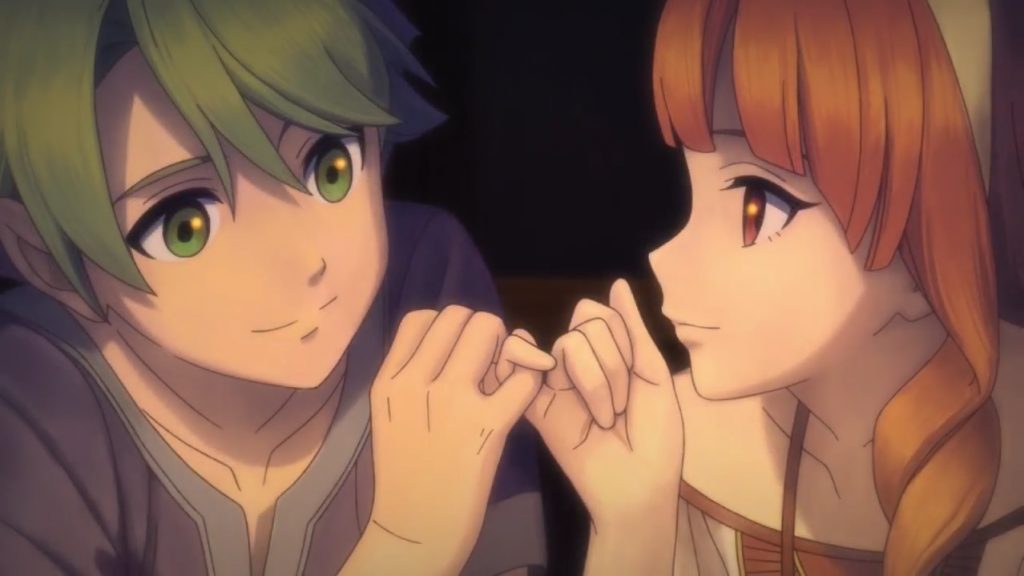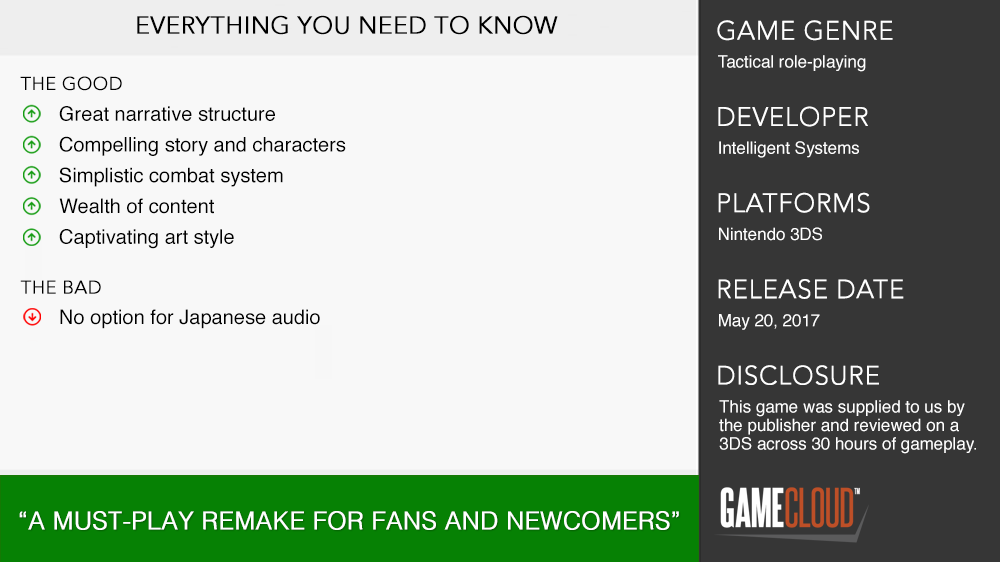
As one of the franchises of JRPG legend status, I leapt at the chance to review Fire Emblem Echoes: Shadows of Valentia. While not personally being a long-standing fan of the series, I was blown away by Fire Emblem: Awakening in 2013, as many others were, and I don’t want to be made to look the fool twice. Interestingly, Shadows of Valentia is a full remake of the 1992 Famicom title Fire Emblem Gaiden which was the second entry in the series.
Set on the continent of Valentia, the story follows the two characters Alm and Celica who are childhood friends that end up fighting on opposite sides of the war between their respective nations. Filled with political intrigue and fantastic character development, the story of Shadows of Valentia is a spectacle. The cast of people, ranging from the flamboyant archer Leon to Faye, who holds an unrequited love for Alm, are all interesting and nuanced in their particular way – both as individuals and in their relationships with other characters. In a game that could very easily be overwhelmed with the sheer amount of characters, it manages to remain both interesting and punchy with its delivery and structure. As someone who is positioned to be critical, I crave the opportunity to be emotionally engaged with games, and Shadows of Valentia did a fantastic job in making me feel for the characters and their struggles. Key additions such as the Memory Prism also provide cutscenes which often detail conversations and interactions between characters that have taken place in the past, and allow you to find out more about their ambitions and motivations.

While not entirely different from other Fire Emblem games, one of the features I’ve specifically enjoyed is the fact that the journey of Alm and Celica runs side-by-side concerning narrative and gameplay. What makes this experience amazing is that it loops back into the gameplay, halting you at certain points until your other army has performed a particular function. It adds a sense of purpose to the way the story rolls out and also shows a deeper level of consideration from the developers about how they wanted the story to unfold. As usual, the interface of the game is easy to navigate and focuses on the features which are crucial to gameplay or function. Design such as this goes a long way in helping inexperienced or first-time players ease into the game and is a masterstroke in itself when a lot of games seem to be concerned these days with overstuffing features and menus into games.

Experienced players will be familiar with the turn-based, map-oriented combat of Fire Emblem, but what strikes me again is the simplicity of the gameplay. While there’s a strategic element, it’s a style of play which lends itself well to both veterans and newcomers alike, depending on whether you want to play either the Normal or Hard mode. Admittedly, I’m very precious about my characters and don’t want to miss out on anything, so I’ve only played the Normal mode. However, to have a game which requires only two modes and provides A+ quality experiences in both proves the level of care and crafting that Intelligent Systems has put into Shadows of Valentia. Some of this ease of play also comes from the scaled back systems, such as the weapon “Rock-paper-scissor” dynamic from Awakening which they removed for this particular entry. Coupled with additional gameplay content, such as explorable dungeons littered across the map and a wealth of DLC still to come, this Fire Emblem doesn’t skimp on content.
For frequent readers, many of you will know I’m exceptionally fond of dual audio releases for JRPGs, but, unfortunately, this isn’t an option on Shadows of Valentia. However, there’s a significant amount of English voice acting that went into this title, and while I’m not a huge fan of it overall, I do appreciate how much scope goes into building these characters and their personalities. As usual, the soundtrack also acts as an excellent backdrop for moments of drama and tension, which are aplenty in Shadows of Valentia, and means there’s rarely a dull moment regardless of whether you’re wandering through a village or on the battlefield. Benefitting from a complete revamp, the artwork, while sticking to the contemporary Fire Emblem format, doesn’t diminish the quality and is a joy to take in from start to finish.

In all honesty, I can find little to fault in Fire Emblem Echoes: Shadows of Valentia. From top to bottom, the game is so immaculate in all regards that it has made me a lifetime fan of the series and also inspired me to want to go back and check out earlier entries I never got a chance to play. Despite not playing as many Nintendo games as I used to, Fire Emblem is a testament to the studios they work alongside and just how important quality is to them. For people who either haven’t been interested in Fire Emblem or perhaps haven’t played a game in the series for a while, Shadows of Valentia is as excellent a starting point as any other.











